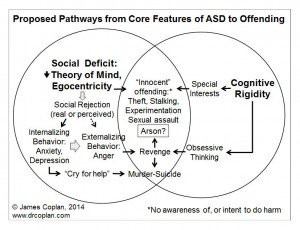November 24th, 2014 by drcoplan

RMS Titanic. Photo credit: Wikipedia Commons.
Dr. Coplan unloads on the hardest part of a pediatrician’s job
What do you suppose is the hardest part of my job as a pediatrician? If you guessed “Giving bad news,” you would be wrong.
Make no mistake about it: giving bad news is never easy:
- Your son / daughter has died.
- Your son / daughter has :
- Cerebral Palsy
- Intellectual Disability
- Autism
- Brain Damage
- Spinal cord injury
- Cancer
- A degenerative disorder for which we have no treatment
- Other [fill in the blank]
Surprisingly, however, giving bad news is not the hardest part of my job. Properly done, giving bad news is an act of compassion that sustains parents and helps to assure that family healing will (eventually) take place. Giving bad news requires me to practice my profession at the highest level. As painful as the process may be, it offers me the satisfaction of a difficult job well done.
So, what is the hardest part of my job?
In episode 23 of The Twilight Zone (The Nightmare at 20,000 feet), a passenger (played by a very young William Shatner, pre- Star-Trek fame) spots a monster on the wing of the airplane, and watches with horror as the creature slowly begins to devour the wing of the aircraft. This plot device forms the basis for innumerable movies: Only the protagonist sees the danger– everyone else is placidly unaware. The “Invasion of the Body Snatchers” is another great example: The hero struggles to stay awake. Everyone else is either ignorant of the danger, or their minds have already been taken over. (Written and produced during the McCarthy Era, this film is also a metaphor for America’s fear of creeping Communism: Substitute “Reds” for “alien pods,” and you get the idea.). Read the rest of this entry »
Externalizing Behavior: Despair plus Rage
July 13th, 2014 by drcoplan

Dr. Coplan traces the pathway from internalizing to externalizing behavior. Despair and rage are intertwined, leading to tragic final outcome.
Last time we were talking about internalizing behavior – all the emotional stuff we deal with on the inside. Someone who feels miserable and hopeless will seek a way out of their pain. Too often, the way out is suicide. But there is another, even more horrific end point: All of that despair can suddenly flip over to rage. Now we are talking about the items 7-9 in Lorna Wing’s list:
1. Assumption that the person’s own needs supersede all other considerations
2. Lack of awareness of wrongdoing
3. Intellectual interest (what Asperger himself called “Autistic acts of malice”)
4. Pursuit of “special” interests (objects, people)
5. Vulnerability
6. Cry for help
7. Hostility towards family
8. Hyperarousal
9. Revenge
Take a look at the diagram. I’ve added a big arrow leading from Internalizing Behavior to Externalizing behavior. In this scenario, despair and rage are inextricably intertwined. Newtown, Virginia Tech, Isla Vista, Red Wing, and Columbine were not just “mass shootings.” They were suicides. That fact tends to get ignored, or, if someone raises it, the person who does so gets shouted down as being too sympathetic to the shooter. This is misguided. The only way to reduce the recurrence risk of “the next Newtown” is to take an unbiased view of the shooter’s behavior. (It drives me nuts to hear people characterize Adam Lanza as “evil.” I have blogged at length on that subject, here.) Internalizing behavior often goes through a long gestation period before it finally bursts out as externalizing. The real tragedy is that internalizing behavior is often overlooked until it’s too late.
I’ve also added a smaller, dashed line from social rejection directly to externalizing, but people who externalize right away may be letting off pressure – like a volcano with a vent on the side of the mountain. They sometimes commit violence, but it doesn’t seem to be to the same scale as someone who has been internalizing for a long time. The mass shooters we read about in the headlines are almost always described as quiet, unobtrusive people who had never hurt anyone before their one and only cataclysm.

Click on graph to view full size.
Read the rest of this entry »















